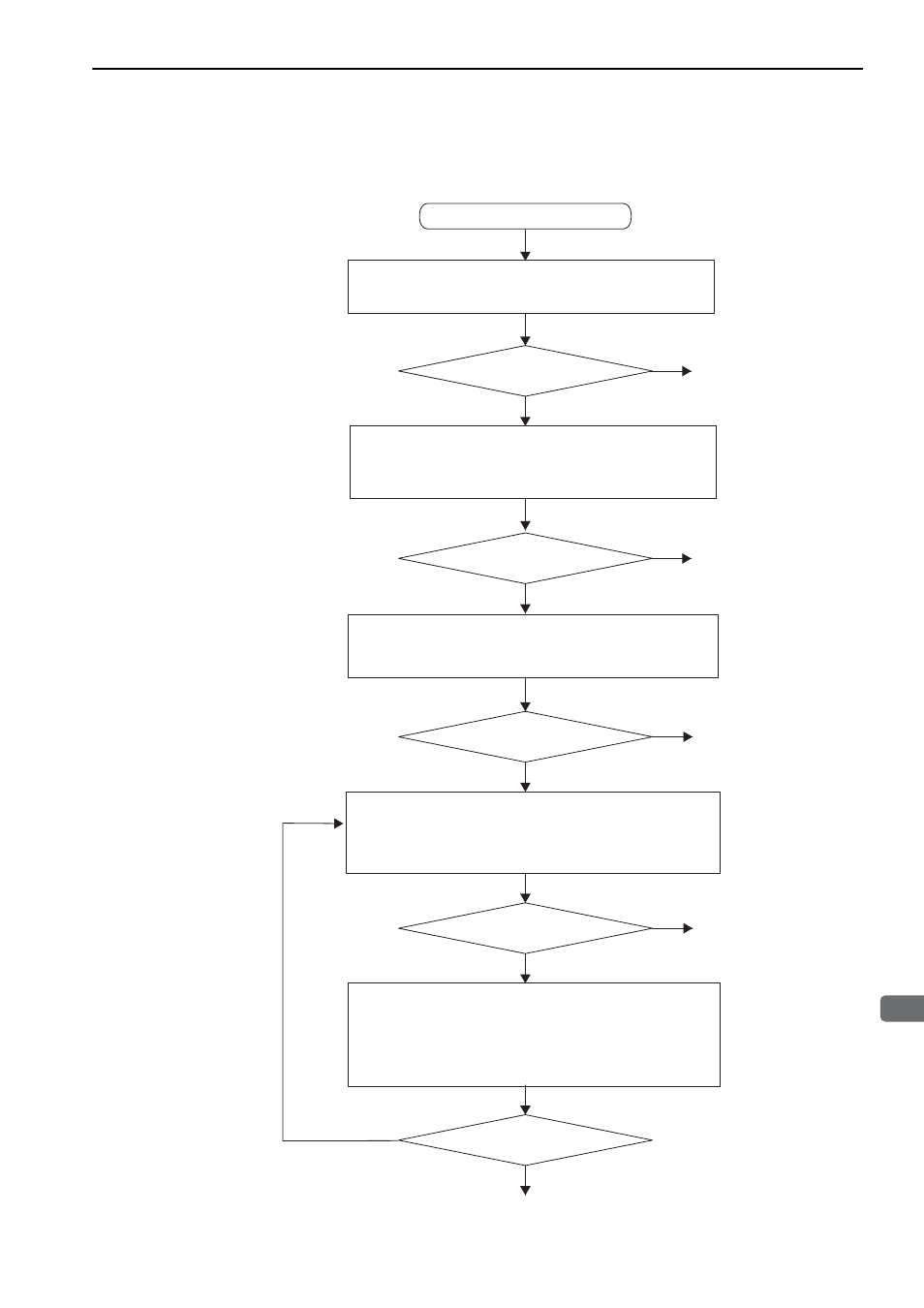2 basic adjustment procedure – Yaskawa Sigma-5 User Manual: Design and Maintenance - Rotary Motors - Analog Voltage and Pulse Train Reference User Manual
Page 208

6.1 Type of Adjustments and Basic Adjustment Procedure
6-5
6
Adjustm
e
nts
6.1.2 Basic Adjustment Procedure
The basic adjustment procedure is shown in the following flowchart. Make suitable adjustments considering
the conditions and operating requirements of the machine.
Start adjusting servo gain.
(2)
Completed.
Completed.
(1) Adjust using Tuning-less Function.
Runs the servomotor without any adjustments.
(3)
(4)
Results OK?
Results OK?
Results OK?
Results OK?
Completed.
Yes
Yes
Completed.
Yes
No
Yes
No
No
No
Results OK?
Completed.
Yes
No
Adjust using Advanced Autotuning.
Adjust using Advanced Autotuning by Reference.
Automatically adjusts gains and filters with user reference inputs.
Adjust using One-parameter Tuning.
Manually adjusts gains and filters.
Position loop gain, speed loop gain, filters, and friction compensation
adjustments are available.
Continuous vibration occurs.
Reduce the vibration using Anti-resonance Control Adjustment Function.
Residual vibration occurs at positioning.
Reduce the vibration using Vibration Suppression Function.
Refer to 6.2 Tuning-less Function.
Automatically adjusts the moment of inertia ratio, gains, and filters
with internal references in the SERVOPACK.
Refer to 6.3 Advanced Autotuning (Fn201).
Refer to 6.4 Advanced Autotuning by Reference (Fn202).
Refer to 6.5 One-parameter Tuning (Fn203).
Refer to 6.6 Anti-Resonance Control Adjustment Function (Fn204).
Refer to 6.7 Vibration Suppression Function (Fn205).